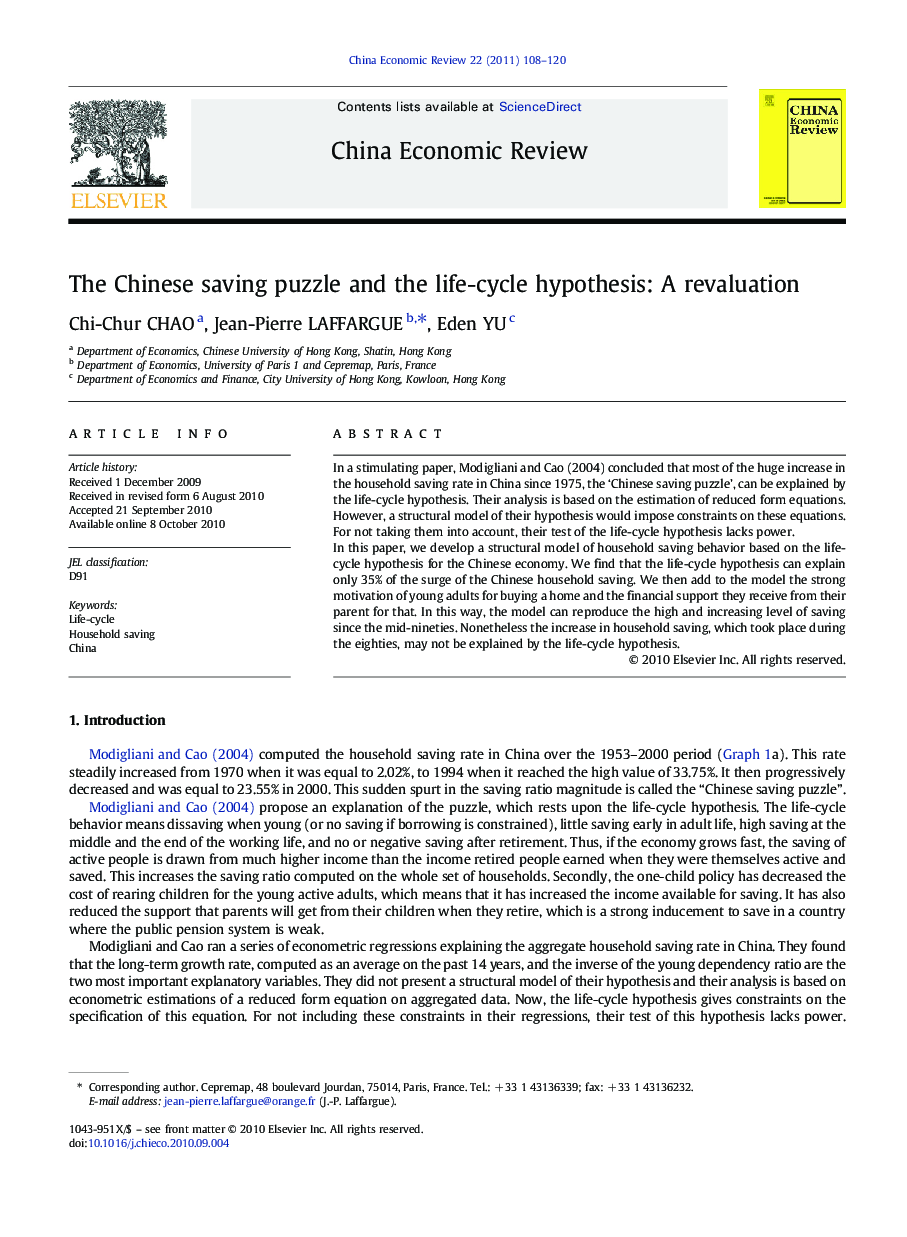| کد مقاله | کد نشریه | سال انتشار | مقاله انگلیسی | نسخه تمام متن |
|---|---|---|---|---|
| 5047896 | 1370924 | 2011 | 13 صفحه PDF | دانلود رایگان |

In a stimulating paper, Modigliani and Cao (2004) concluded that most of the huge increase in the household saving rate in China since 1975, the 'Chinese saving puzzle', can be explained by the life-cycle hypothesis. Their analysis is based on the estimation of reduced form equations. However, a structural model of their hypothesis would impose constraints on these equations. For not taking them into account, their test of the life-cycle hypothesis lacks power.In this paper, we develop a structural model of household saving behavior based on the life-cycle hypothesis for the Chinese economy. We find that the life-cycle hypothesis can explain only 35% of the surge of the Chinese household saving. We then add to the model the strong motivation of young adults for buying a home and the financial support they receive from their parent for that. In this way, the model can reproduce the high and increasing level of saving since the mid-nineties. Nonetheless the increase in household saving, which took place during the eighties, may not be explained by the life-cycle hypothesis.
Research HighlightsâºHuge increase in the household saving rate in China since 1975. âºLife-cycle hypothesis (LCH) can explain only 35% of this rise. âºParents save to help their children to buy a home. âºThis improves the explanatory power of the LCH after 1995. âºThe increase in household saving in the 80s is not explained by the LCH.
Journal: China Economic Review - Volume 22, Issue 1, March 2011, Pages 108-120